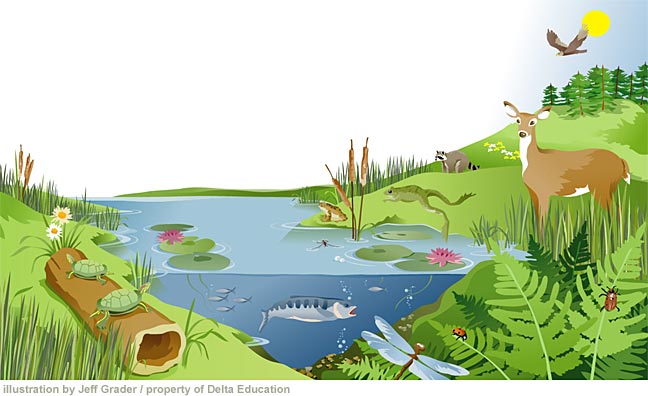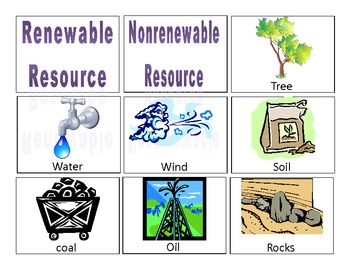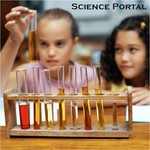| Picture |
Assessments
|
MS-LS2-1.

Ecosystems
Formative
Assessment Goes Here
- Quia Vocab and Concepts Quizzes
- practice assessments
|
MS-LS2-1 Analyze
and interpret data to provide evidence for the effects of resource
availability on organisms and populations of organisms in an ecosystem.
[Clarification Statement: Emphasis is on cause
and effect relationships between resources and growth of individual
organisms and the numbers of organisms in ecosystems during periods of
abundant and scarce resources.].
Planning and Carrying Out Investigations
● Plan an investigation individually and collaboratively, and in the design: identify independent and dependent variables and controls, what tools are needed to do the gathering, how measurements will be recorded, and how many data are needed to support a claim. Students could plan an investigation [to identify] organisms’ dependence on environmental interactions both with other living things and with nonliving factors. MS-LS2-1
Scientific Investigations Use a Variety
of Methods
● Science investigations are guided by a set
of values to ensure accuracy of measurements, observations, and
objectivity of findings.
Students could report on their efforts to
ensure accuracy of measurements, observations, and objectivity of findings
[when they conduct] investigations [regarding] organisms dependence on
environmental interactions both with other living things and with
nonliving factors. MS-LS2-1
|
MS-LS2-2.

Ecosystems
Formative Assessment Goes Here
- Quia Vocab and Concepts Quizzes
- practice assessments
|
MS-LS2-2 Construct
an explanation that predicts patterns of interactions among organisms
across multiple ecosystems.
[Clarification Statement: Emphasis is on predicting consistent patterns of
interactions in different ecosystems in terms of the relationships among
and between organisms and abiotic components of ecosystems. Examples of
types of interactions could include competitive, predatory, and mutually
beneficial.]
Developing and Using Models
● Develop or modify a model—based on evidence—to match what happens if a variable or component of a system is changed.
Students could modify a model based on evidence [about] organisms’ dependence on their environmental interactions both with other living things and with nonliving factors to match what happens if a variable or component of a system is changed. MS-LS2-1
Engaging in Argument from Evidence
● Construct, use, and/or present an oral and written argument supported by empirical evidence and scientific reasoning to support of refute an explanation or a model for a phenomenon.
Students could present an oral argument supported by empirical evidence and scientific reasoning to support a model [of] organisms’ dependence on their environmental interactions both with other living things and with nonliving factors. MS-LS2-1
Cause & Effect
●
Cause and effect relationships may be used to predict phenomena in natural
or designed systems.
Students could use cause and effect
relationships to predict competitive, predatory, and mutually beneficial
interactions [of organisms] in natural systems. MS-LS2-2
|
MS-ESS2-2.

Plate Tectonics
Formative Assessment Goes Here
- Quia Vocab and Concepts Quizzes
- practice assessments
|
MS-ESS2-2
Construct an explanation based on evidence for how geoscience processes
have changed Earth's surface at varying time and spatial scales.
[Clarification Statement: Emphasis is on
how processes change Earth’s surface at time and spatial scales that can
be large (such as slow plate motions or the uplift of large mountain
ranges) or small (such as rapid landslides or microscopic geochemical
reactions), and how many geoscience processes (such as earthquakes,
volcanoes, and meteor impacts) usually behave gradually but are punctuated
by catastrophic events. Examples of geoscience processes include surface
weathering and deposition by the movements of water, ice, and wind.
Emphasis is on geoscience processes that shape local geographic features,
where appropriate.]
Obtaining, Evaluating, and Communicating Information
● Critically read scientific texts adapted for classroom use to determine the central ideas and/or obtain scientific and/or technical information to describe patterns in and/or evidence about the natural world.
Students could critically read scientific texts adapted for classroom use to obtain scientific information to describe patterns in weathering and erosion. MS-ESS2-2
Scale, Proportion, and Quantity
● Phenomena that can be observed at one scale may not be observable at
another scale.
Students could identify
phenomena [related to] weathering and erosion that can be observed at one
scale [but are] not observable at another scale. MS-ESS2-2
Patterns
● Graphs,
charts, and images can be used to identify patterns in data.
Students
could use images to identify patterns in data [about] water’s movements,
weathering, and erosion. MS-ESS2-2
Scientific Knowledge Assumes an
Order and Consistency in Natural Systems
● Science
assumes that objects and events in natural systems occur in consistent
patterns that are understandable through measurement and observation.
Students could [identify how their conclusions about the effects of]
water’s movements on the land’s surface features and underground
formations [are based on the] assumption that objects and events in
natural systems occur in consistent patterns that are understandable
through measurement and observation. MS-ESS2-2 |
MS-ESS2-3.

Plate Tectonics
Formative Assessment Goes Here
Packet
- Quia Vocab and Concepts Quizzes
- practice assessments
Packet
|
MS-ESS2-3
Analyze and interpret data on the distribution of fossils and rocks,
continental shapes, and seafloor structures to provide evidence of the
past plate motions.
[Clarification
Statement: Examples of data include similarities of rock and fossil types
on different continents, the shapes of the continents (including
continental shelves), and the locations of ocean structures (such as
ridges, fracture zones, and trenches).] [Assessment Boundary:
Paleomagnetic anomalies in oceanic and continental crust are not
assessed.]
Analyzing and Interpreting Data
● Use graphical displays (e.g., maps, charts, graphs, and/or tables) of large data sets to identify temporal and spatial relationships.
Students could use graphical displays (i.e., maps of ancient land and water patterns) of large data sets [of] rocks and fossils to identify temporal and spatial relationships [such as] how Earth’s plates have moved great distances, collided, and spread apart. MS-ESS2-3
Using Math and Computational Thinking
● Apply mathematical concepts and/or processes (e.g., ratio, rate, percent, basic operations, simple algebra) to scientific and engineering questions and problems.
Students could apply mathematical concepts to answer scientific questions [about the] generation of new ocean sea floor at ridges and the movement of Earth’s plates. MS-ESS2-3
Constructing Explanations
● Construct an explanation that includes qualitative or quantitative relationships between variables that predict(s) and/or describe(s) phenomena.
Students could construct an explanation that includes qualitative relationships between variables to describe how Earth’s plates have moved great distances, collided, and spread apart. MS-ESS2-3
|
MS-ESS3-1.

Earth's Resources
Formative Assessment Goes Here
Packet
- Quia Vocab and Concepts Quizzes
- practice assessments
Packet
|
MS-ESS3-1
Construct a scientific explanation based on evidence for how the uneven
distributions of Earth's mineral, energy, and groundwater resources are
the result of past and current geoscience processes
[Clarification Statement: Emphasis is on
how these resources are limited and typically non-renewable, and how their
distributions are significantly changing as a result of removal by humans.
Examples of uneven distributions of resources as a result of past
processes include but are not limited to petroleum (locations of the
burial of organic marine sediments and subsequent geologic traps), metal
ores (locations of past volcanic and hydrothermal activity associated with
subduction zones), and soil (locations of active weathering and/or
deposition of rock).]
Asking Questions
● Ask questions that require sufficient and appropriate empirical evidence to answer.
Students could ask questions that require sufficient and appropriate empirical evidence to answer about the distribution of resources around the planet. MS-ESS3-1
|



